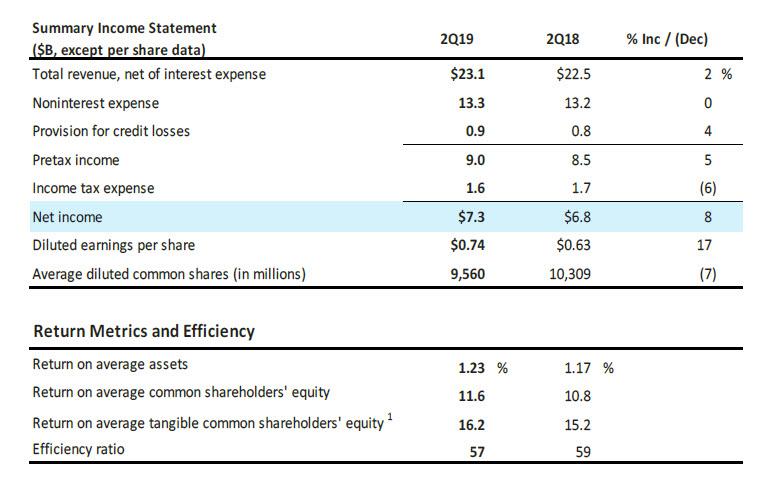Contents:
Our editors and reporters thoroughly fact-check editorial content to ensure the information you’re reading is accurate. Our editorial team does not receive direct compensation from our advertisers. Any estimates based on past performance do not a guarantee future performance, and prior to making any investment you should discuss your specific investment needs or seek advice from a qualified professional. ProjectManager has project reports for a variety of different project metrics, from variance to task progress. All these reports can be filtered instantly, so you’re always prepared to make that deep dive into the data when it’s requested.
The ownership percentage depends on the number of shares they hold against the company’s total shares. The short-term focus of shareholders is evident when the press reports a negative news story about a company. Negative press often leads to an immediate drop in share price as investors offload shares. For instance, common stock comes with voting rights, so institutions may buy this type of stock to gain a controlling interest in a company. Companies may issue another kind of stock called preferred stock, and owners of this could also rightly be termed shareholders.
Otherwise, to proceed, agree to the Terms and Conditions and Privacy Policy of this website. Shareholders want to feel they have some level of control regarding an organization’s directions and decisions as it can affect their own monetary gains. That companies should pay their fair share of taxes, have zero tolerance for corruption, uphold human rights through their supply chains, and promote a competitive and level playing field. Auditors from B Lab verify the company’s claims, and accredit it if the 80-point threshold is met. Companies pay an annual certification fee based on their size and have to re-certify every three years.
Shareholders can generally sell their ownership or buy more shares at will, whereas stakeholders are usually bound to the activities of a company and the related impacts regardless of choice. This tends to make the relationship stakeholders have with a company more long-term, while shareholders have no long-term need for a company. A good way to think about this is that stakeholders are inherently tied to the benefits and burdens of a company’s externalities, while shareholders opt-in to have their finances linked to the financial performance of a company. Stakeholders in a company include its employees, board members, suppliers, distributors, governments, and sometimes even members of the community where a business is operating. Employees and board members are internal stakeholders because they have a direct relationship with the company. Distributors and community members, however, are examples of external stakeholders.
- While institutions are making progress, they’re hampered by unclear decision rights and different regulatory priorities across regions.
- All stakeholders are bound to a company by some type of vested interest, usually for the long term and for reasons of need.
- The biggest difference between the two is that shareholders focus on a return of their investment.
While institutions are making progress, they’re hampered by unclear decision rights and different regulatory priorities across regions. Similarly, 55% of respondents say there are still unclear roles and responsibilities for managing climate risk between their companies’ business and corporate functions. External stakeholders, unlike internal stakeholders, do not have a direct relationship with the company.
How stakeholders and shareholders influence project management
The scope of stakeholders is wider than that of the shareholder, in the sense that the latter is a part of the former. As far as the stakeholder theory is concerned, for organizations to truly create shareholder value, companies must embrace social responsibility and very carefully consider the needs of all of its stakeholders. The distinctions between groups are brought out in theories on shareholders and stakeholders. Shareholder theory suggests that the sole responsibility of corporations is to maximize profits for shareholders. Stakeholder theory, in contrast, is the idea that stakeholders should have priority and that the relationship between stakeholders and the company is more complex and nuanced.

If they’re shareholders in a project, then their interests are tied to the project’s success. As a shareholder, you want to get the most financial return on your investment. That means you’re probably interested in how the company performs on a high level, because stock prices go up when the company does well. And when stock prices go up, you have an opportunity to sell your shares and make a profit. A CEO is a stakeholder in the company that employs them, since they are affected by and have an interest in the actions of that company. Many CEOs of public companies are also shareholders, especially if stock options are a part of their compensation package.
Example of an External Stakeholder
While some stakeholders are mainly concerned with a company’s performance for financial reasons, that isn’t always the case. A company’s customers can be stakeholders, as can government entities, which are supported by the company’s taxes and those of employees. Stakeholders are people who depend on the company, including investors.

The organizational management is required to identify the relevant issues affecting the organizational performance and to construct a network of the pattern of inter-relationships. It is to be noted that the organization is normally surrounded by a complex array of people, units, https://1investing.in/ and other organizations which interrelate with it on the basis of various roles. These people, units, and organizations can be termed as ‘publics with opinions’. The network of the inter-relationships provides the management critical informations for taking decisions.
Differences Between a Stakeholder vs. Shareholder
In recent years, there has been a trend toward thinking more broadly about who constitutes the stakeholders of a business. For instance, customers can change their buying habits, suppliers can change their manufacturing and distribution practices, and governments can modify laws and regulations. Ultimately, managing relationships with internal and external stakeholders is key to a business’s long-term success. Stakeholders in a business include any entity that is directly or indirectly related to how a company operates, whether it succeeds, or if it fails. These can include actively-involved owners as well investors who have passive ownership.
Shareholders are important for your company, but as a project lead or program manager you should really prioritize stakeholder theory. That’s because shareholders are usually most concerned with short-term goals that impact stock prices, rather than the long-term health of your company. If you prioritize short-term wins and revenue gains over everything else, you might sacrifice your company culture, business relationships, and customer satisfaction in the process. Shareholders and stakeholders also have different timelines for achieving their goals.
When you login first time using a Social Login button, we collect your account public profile information shared by Social Login provider, based on your privacy settings. We also get your email address to automatically create an account for you in our website. Advisers do not take decisions but their advices help the management in taking decisions. The advice may be in the form of overall guidelines, position papers, data analysis, sample procedures, and draft standards etc. Organizations must not ignore the advice of the adviser during decision making since the advices are usually impersonal. Further, management may take opportunity to partner with resource supplier in the development of a specialized product.

They are the company’s owners, but their liability is limited to the value of their shares. Publicly Listed CompanyPublicly Traded Companies, also called Publicly Listed Companies, are the Companies which list their shares on the public stock exchange allowing the trading of shares to the common public. It means that anybody can sell or buy these companies’ shares from the open market. Bankrate follows a stricteditorial policy, so you can trust that our content is honest and accurate. Our award-winning editors and reporters create honest and accurate content to help you make the right financial decisions.
Typical stakeholders are investors, employees, customers, suppliers, communities, governments, or trade associations. 1.Shareholders have financial shares in the company while stakeholders difference between shareholders and stakeholders have interest in the company financial or not. It can also be said that shareholders are stakeholders, but the stakeholders are not necessarily the shareholders of the company.
Examples of important stakeholders for a business include its shareholders, customers, suppliers, and employees. Some of these stakeholders, such as the shareholders and the employees, are internal to the business. Others, such as the business’s customers and suppliers, are external to the business but are nevertheless affected by the business’s actions. These days, it has become more common to talk about a broader range of external stakeholders, such as the government of the countries in which the business operates, or even the public at large. Shareholders may want a company to outsource certain production to boost growth and profitability even though many stakeholders like suppliers, employees, and the environment will be negatively affected.
Supporters – Different socially, economically, and politically powerful individual or groups in the society can be supporters of the organization. Brand ambassadors for the product of the organization also come under supporter category. Supporters mobilize ‘friendly power’ for the organization, giving it encouragement and help in developing an environment of goodwill toward the organization.
What is a Stakeholder vs. Shareholder?
The survey found 65% of banks and financial institutions have yet to define who has primary accountability for identifying and addressing climate risks within their operations. Similarly, 55% of respondents say there are still unclear roles and responsibilities for managing climate risk between their companies’ business and corporate functions. And 40% report that they do not embed accountability within their business line, which is considered best practice, instead coordinating ESG initiatives through centralised teams. Corporate social responsibility dictates that any company should base his decisions taking the interest of all stake holders in mind rather than concentrating just upon its shareholders. Today, general public is also considered to be stakeholders in companies and this is why if any action of the company creates pollution or reduces greenery, it is stopped in its tracks by courts or the administration. Shareholders and Stakeholders are people who have some interest in the company in which they have either financial or non financial stake.
My Services
They are also to comply with the mandates of various accrediting agencies. Besides external customers there are internal customers within the organization who also provide useful feedbacks. Shareholders can lose money if the stock price goes down while stakeholders typically only lose money if the company fails altogether. Shareholders can sell their shares at any time while stakeholders do not necessarily have shares or an ability to de-invest at will. Shareholders are primarily concerned with making profit while stakeholders are also concerned with how the company affects their lives. Shareholders own shares in a company while stakeholders have only a vested interest in the company.
